Routes, prices, safety… This short guide gives you information about overland travel in Mexico on public transport.
There’s a lot of information available about traveling through Central America, but it’s much harder to find guides for overland travel through Mexico. After traveling across Mexico on public transport, I decided to share my knowledge on this blog post.
My guide focuses on public transportation instead of car rentals or hitchhiking. For a summary of my own three month overland journey through Mexico, check my other blog post “How I Spent Three Months Traveling Through Mexico“.
Even though this overland Mexico guide focuses on traveling through the country, it’s also helpful for any overland travel in the country.

Mexico has a vast bus nertwork that makes overland travel in Mexico relatively easy.
Is it possible to travel overland through Mexico on public transport?
Yes, absolutely! Mexico has a very fast and organized bus network for overland travel. There are several reliable bus companies around the country. Some places such as Baja California Sur also have a few ferry connections.
Buses and ferries? What about trains?
Outside the regional rails, there’s currently (as of January 2018) only one passenger train connection in Mexico. The El Chepe train goes between the cities of Chihuahua and Los Mochis in northern Mexico. The popular train route offers great views of Copper Canyon, but it’s also quite expensive.
Right now train travel is not a viable option for overland travel around Mexico. However, new routes are under construction and planned to open in the near future.
What are the long-distance buses in Mexico like?
Very fancy! The second class buses are quite basic and lack toilets, but first class services feel like airplanes with fancy seats and movie screens. Sometimes you even get your own airplane-style touch screen for entertainment! Unfortunately all the movies are in Spanish with no subtitles.
Having your own screen is uncommon, though. Most buses play movies on shared screens with the audio coming from loudspeakers. The loud movies make it difficult to concentrate on anything else, so I usually use my earplugs on the bus.
Besides a first and a second class, some Mexican operators offer even more luxurious services. For example, bus company ADO has services called ADO GL and ADO Platino which offer more comfortable seats as well some snacks and beverages.
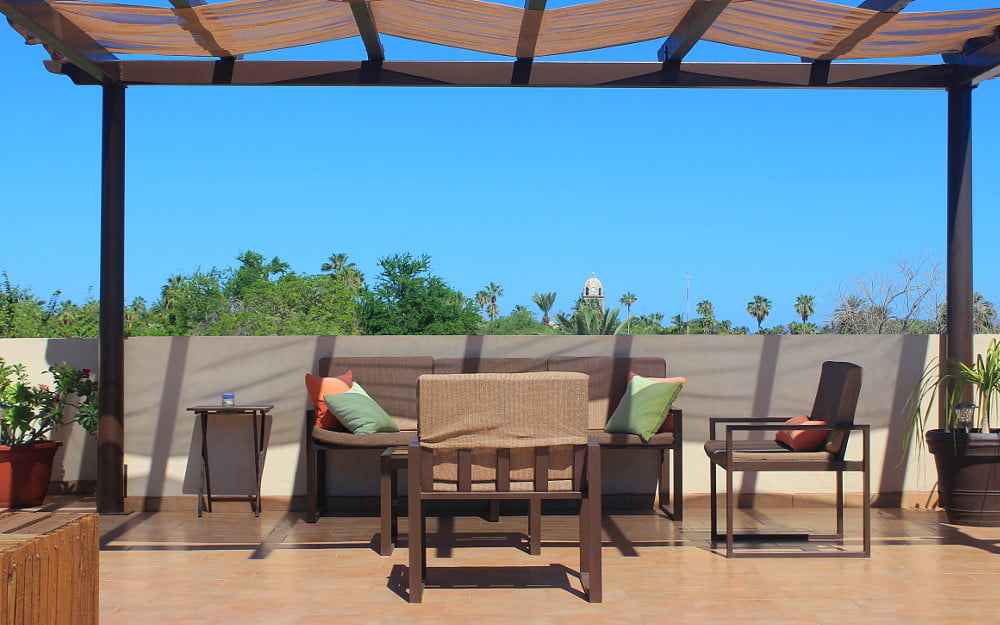
Accommodations in Mexico have a moderate price range. Cheap hostels may cost less than 200 pesos (10 US$) per night, while a cheap hotel room is usually around 400-600 pesos (20-30 US$)
Is overland travel in Mexico cheap?
Buses and ferries in Mexico are relatively cheap. Not “India cheap”, but manageable. On average, my bus rides cost about 100 pesos (5.1 US$) per hour.
Here’s a list of all the buses and ferries I took during my overland trip through Mexico, ticket prices included. I mainly traveled on first class buses. If I remember right, the second class buses are usually around 30 percent cheaper, but don’t take my word on that.
Nogales – Magdalena de Kino, 1 hours (145 MX$ ≈ 7.4 US$)
Magdalena de Kino – Hermosillo, 3 h (208 MX$ ≈ 10.7 US$)
Hermosillo – Guaymas, 1½ h (~200 MX$ ≈ 10.3 US$) My Couchsurfing hosts gave me a ride, so I checked this price online.
Guaymas – Santa Rosalía, 12 h (930 MX$ ≈ 47.7 US$) OVERNIGHT FERRY
Santa Rosalía – Loreto, 3 h (308 MX$ ≈ 15.8 US$)
Loreto – La Paz, 5 h (800 MX$ ≈ 41 US$) Very expensive!
La Paz – Mazatlán 16-18 h (1240 MX$ ≈ 63.6 US$) OVERNIGHT FERRY
Mazatlán – Durango, 4 h (600 MX$ ≈ 30.8 US$)
Durango – Zacatecas, 3 h (470 MX$ ≈ 24.1 US$)
Zacatecas – Aguascalientes, 2-3 h (185 MX$ ≈ 9.5 US$)
Aguascalientes – León, 2-3½ h (195 MX$ ≈ 10 US$)
León – Guanajuato, 1 h (57 MX$ ≈ 2.9 US$)
Guanajuato – San Miguel de Allende, 1½-2 h (143 MX$ ≈ 7.3 US$)
San Miguel de Allende – Querétaro, 1-1½ h (75 MX$ ≈ 3.8 US$)
Querétaro – Mexico City, 1-1½ h (305 MX$ ≈ 15.6 US$)
Mexico City – Puebla, 2-2½ h (190 MX$ ≈ 9.7 US$)
Puebla – Oaxaca, 4-4½ h (574 MX$ ≈ 29.4 US$)
Oaxaca – San Cristobal de Las Casas, 10-11 h (804 MX$ ≈ 41.2 US$) OVERNIGHT BUS
San Cristobal de Las Casas – Palenque, 5 h (318 MX$ ≈ 16.3 US$)
Palenque – Campeche, 5-5½ h (450 MX$ ≈ 23.1 US$)
Campeche – Mérida, 2½ h (141 MX$ ≈ 7.2 US$)
Mérida – Valladolid, 2½-3 h (188 MX$ ≈ 9.6 US$)
Valladolid – Cancún, 2½-3½ (118 MX$ ≈ 6.1 US$)
(200 Mexican pesos ≈ 10 US Dollars)
Click here to see my route through Mexico on an interactive map.
The ticket prices are from late 2017, although prices in 2018 should be about the same. The journey durations are mostly taken from the Lonely Planet Mexico guide book.
Although most Mexican buses leave on time, they often arrive an hour or two behind schedule.
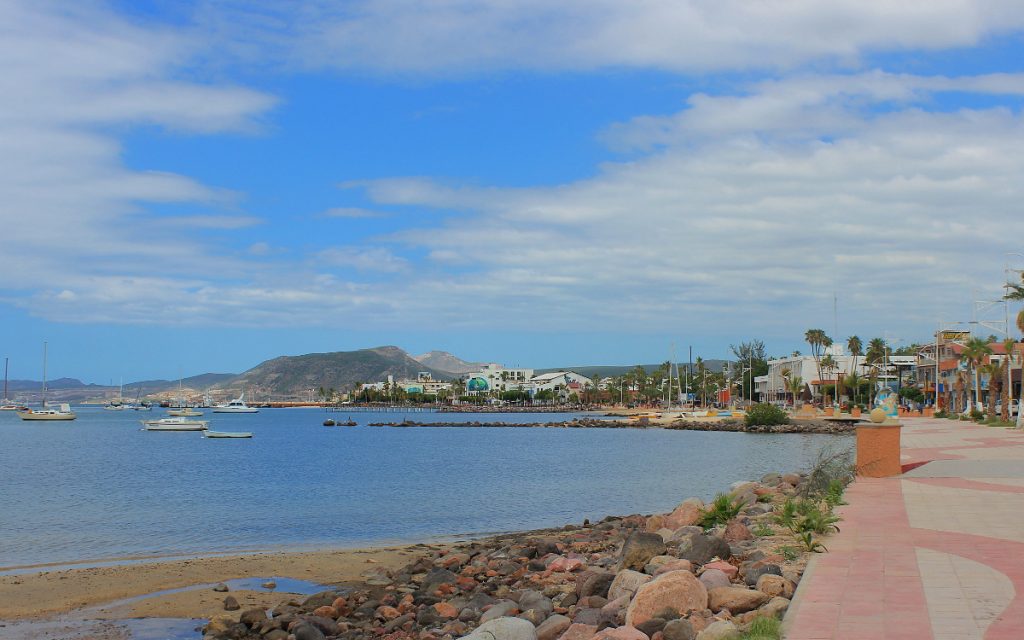
The long-distance buses in Baja California Sur are relatively expensive.
How much does it cost to travel through Mexico on public transport?
My bus and ferry tickets for an overland journey through Mexico cost 8,644 pesos (443 US$) in total. However, I made a lot of stops. I also didn’t travel from the US border to Guatemala or the other way around. Instead, I finished my trip in Cancún in Yucatan Peninsula.
If you want, you can skip the Yucatan Peninsula altogether. For example, a bus from San Cristobal de Las Casas to the Guatemalan Border (Ciudad Cuauhtémoc) takes a bit over 3 hours and costs around 130 pesos (6.8 US$).
All things considered, the total price of bus and ferry tickets for an overland trip through Mexico should set around 6,000-9,000 pesos (~ 300-450 US$) .
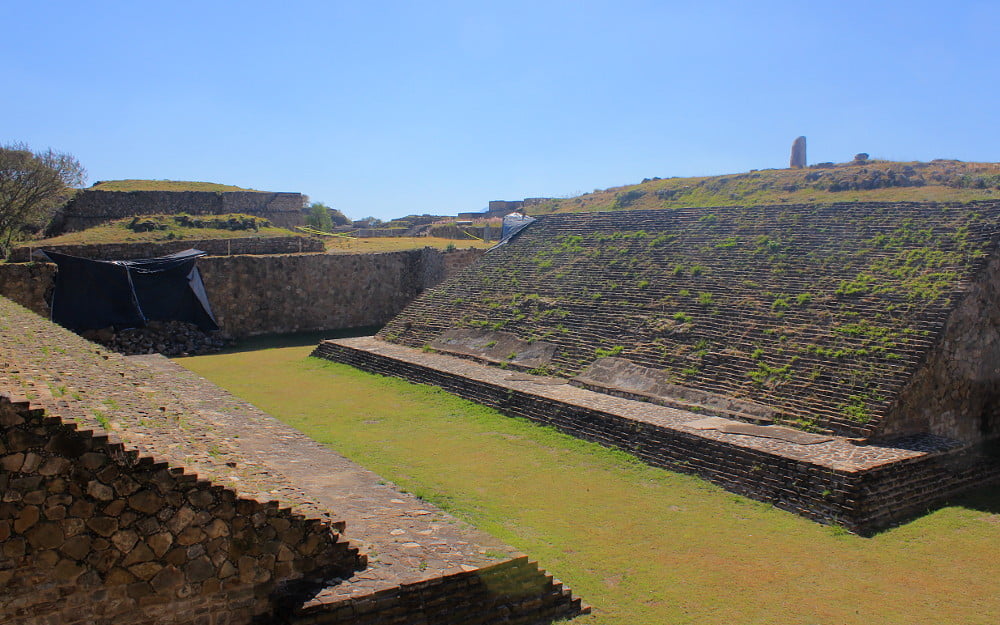
A Mesoamerican ball game court at the ruins of Monte Alban near Oaxaca. Oaxaca City is far from other major destinations, so I took my only overnight bus when I left Oaxaca.
How long does it take to journey overland through Mexico on public transport?
If you travel every day and use occasional overnight buses, you can travel overland through Mexico in 1-2 weeks. If you keep a more modest pace (~3 nights per town, mostly 2-6 hours per bus ride, only a few overnight connections), you can cross Mexico on public transport in 1-2 months.
My overland trip through Mexico took a bit over three months. However, I spent one month volunteering in Mexico City. I also kept my journey times quite short, making lots of stops along the way.
I only took one overnight bus (from Oaxaca to San Cristobal de Las Casas) when there were few other options available.
Which route should I take through Mexico?
There are tons of possibilites! Mexico is a huge country, and all the different states have their distinct flavors.
If you want to spend time at the beaches, both the Pacific and the Caribbean cost offer plenty of spots. Ancient ruins are spread all over the country.
Many beautiful colonial towns are located northwest of Mexico City in states such as Guanajuato, Querétaro and Zacatecas. There’s lots of historical towns in other parts of the country as well, especially south of Mexico City.
Generally speaking, some of the states close to the US border (especially in the east) have the least visitors and the most safety concerns.
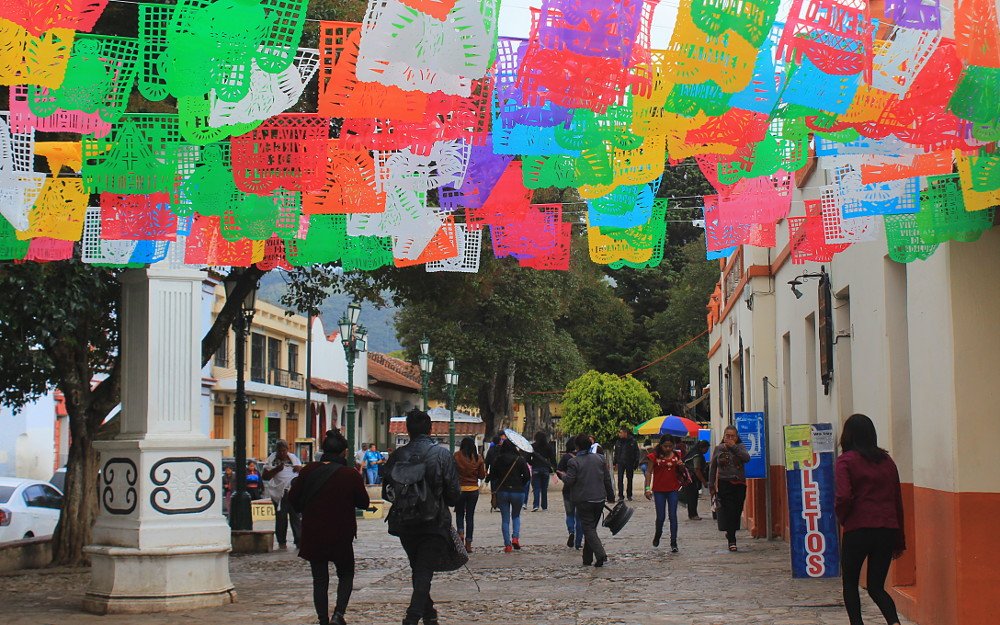
Mexican paper cuts (papel picado) in San Cristobal de Las Casas. The state of Chiapas is known as the home base of the Zapatista revolutionist group, but most towns of the state are now relatively safe for tourists.


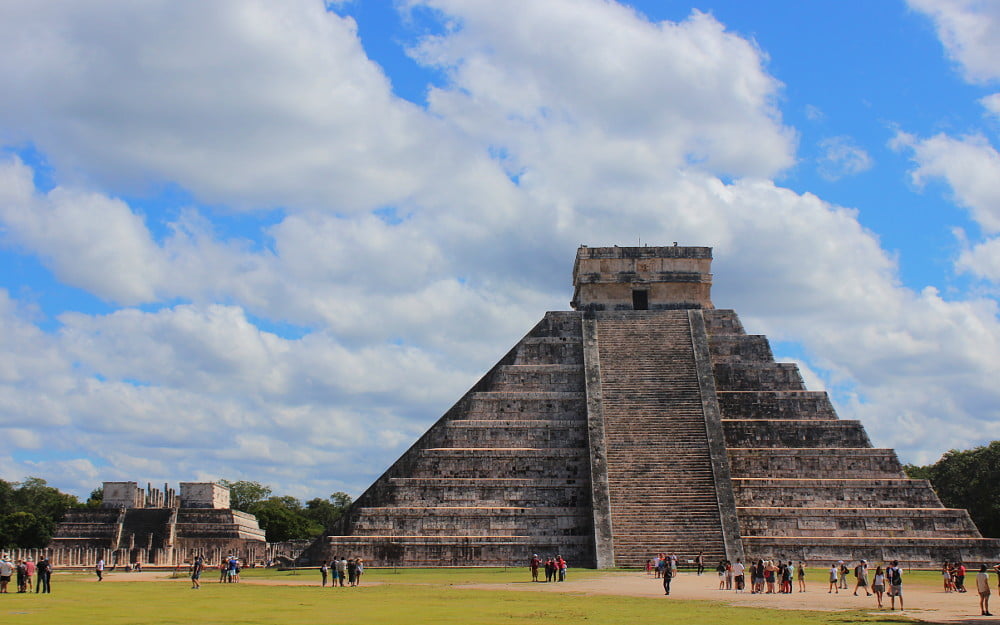
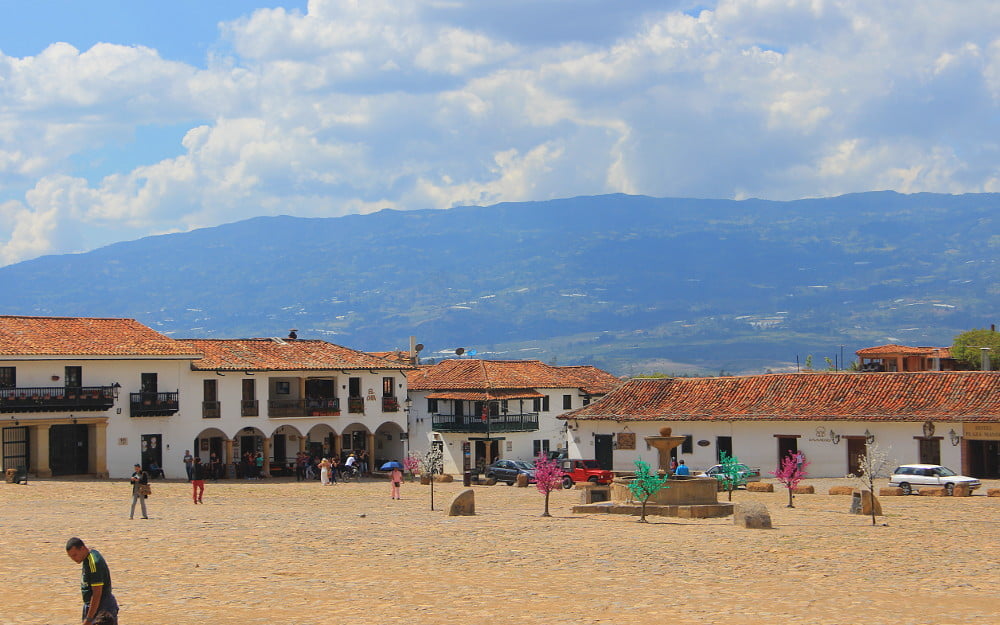

2 comments
Hi
I plan to travel in Mexico in this coming October. May I ask you for information via email?
Regards
Jat
Sure! 🙂 You can send your message to arimotravels@gmail.com.